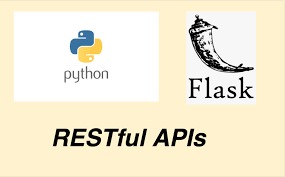Are you ready to dive into the world of web development and wield the mighty Flask framework like a seasoned pro? Look no further! In this blog post, we’ll embark on an exciting journey to create a RESTful API using Python and Flask. So, buckle up and get ready to unleash your coding prowess!
What is Flask?
Before we dive into the nitty-gritty of building a RESTful API, let’s take a moment to appreciate the beauty of Flask. Flask is a micro web framework for Python that’s lightweight, easy to learn, and incredibly powerful. Whether you’re a beginner or an experienced developer, Flask provides a flexible platform for building web applications and APIs with ease.

Setting the Stage: Installation
First things first, let’s get Flask installed on our system. Fire up your terminal and enter the following command
pip install Flask
With Flask installed, we’re now equipped to begin our journey into the realm of web development!
Building Blocks: Creating Our API
Now that Flask is up and running, it’s time to start building our RESTful API. But wait, what exactly is a RESTful API? In simple terms, it’s an interface that allows different systems to communicate with each other over HTTP, following the principles of Representational State Transfer (REST).
Let’s create a simple API for managing a collection of books. Here’s a sneak peek at what our API will be capable of:
- GET /books: Retrieve a list of all books.
- GET /books/<id>: Retrieve details of a specific book.
- POST /books: Add a new book to the collection.
- PUT /books/<id>: Update details of a specific book.
- DELETE /books/<id>: Delete a specific book.
Coding Like a Boss: Implementation
With our API endpoints planned out, let’s roll up our sleeves and start coding! Fire up your favorite text editor and create a new Python file, let’s call it app.py.
from flask import Flask, jsonify
app = Flask(name)
Sample data for demonstration purposes
books = [
{“id”: 1, “title”: “Python Programming”, “author”: “Guido van Rossum”},
{“id”: 2, “title”: “Flask Essentials”, “author”: “John Doe”}
]
@app.route(‘/books’, methods=[‘GET’])
def get_books():
return jsonify(books)
Additional routes for other CRUD operations
if name == ‘main‘:
app.run(debug=True)
Testing Our API
Now that we’ve coded our API, it’s time to put it to the test! Fire up your terminal, navigate to the directory where app.py resides, and run the following command:
python app.py
Voila! Your Flask server is now up and running. Open your favorite web browser or API testing tool and start making requests to your API endpoints.
Conclusion
Congratulations, you’ve successfully built a RESTful API with Flask! But remember, this is just the beginning of your journey into the world of web development. There’s still so much more to learn and explore. So keep coding, keep experimenting, and most importantly, have fun!
In the words of the legendary Pythonista, “Keep calm and Flask on!”
Happy coding! 🚀🐍